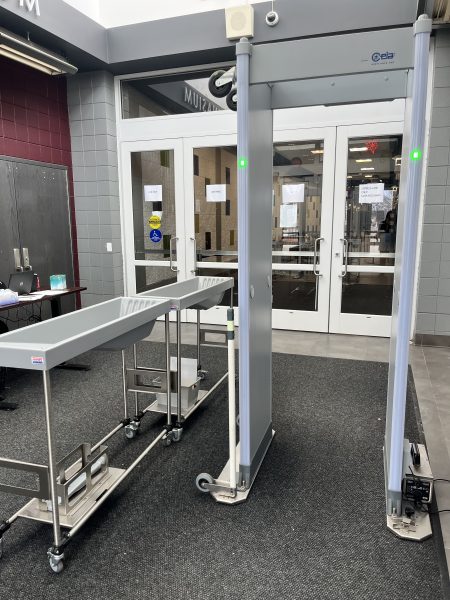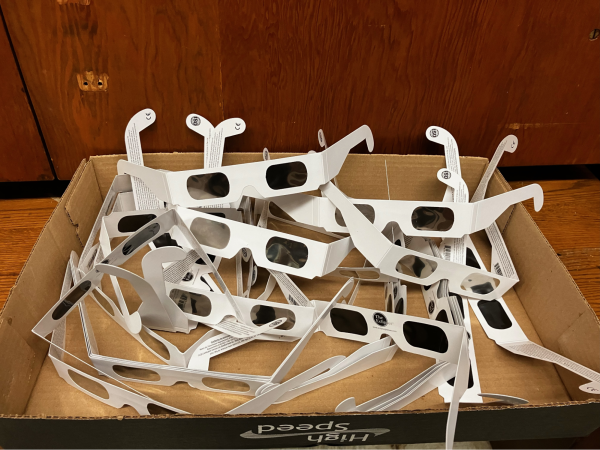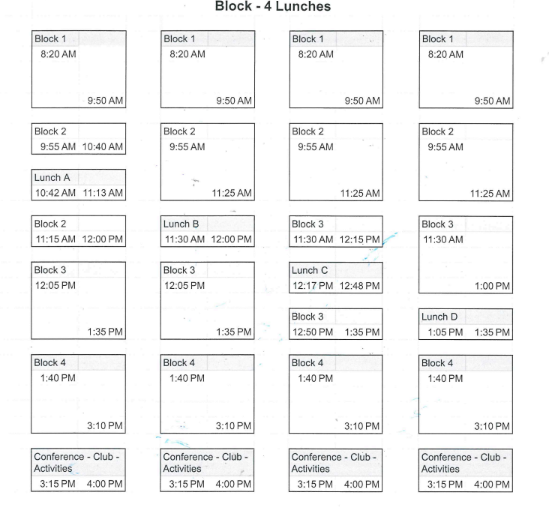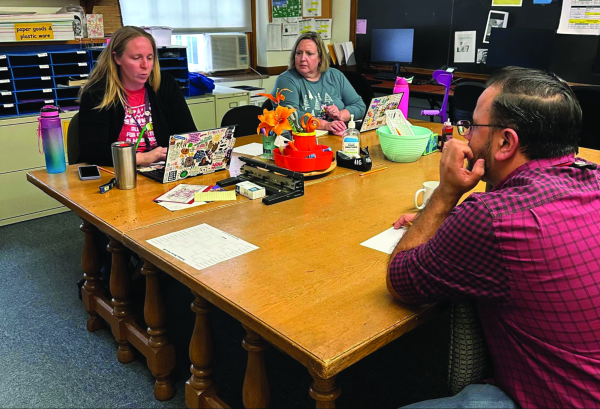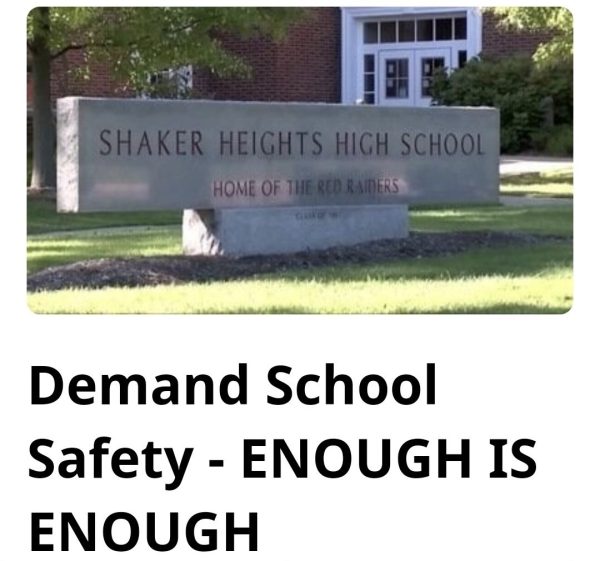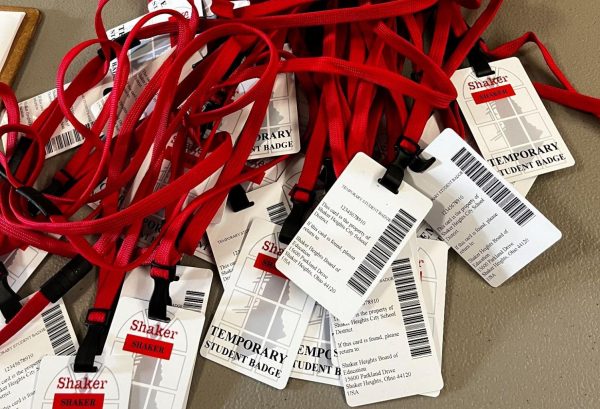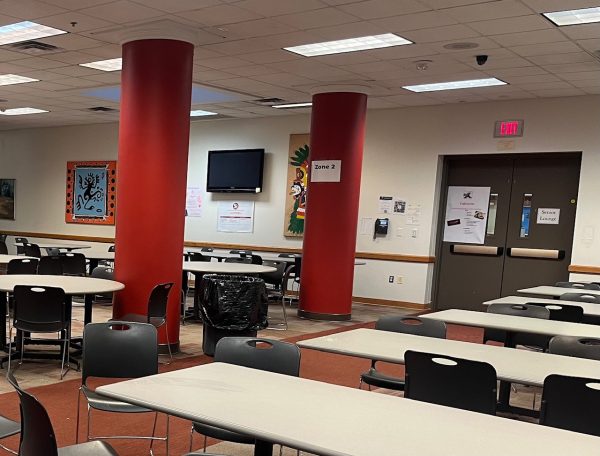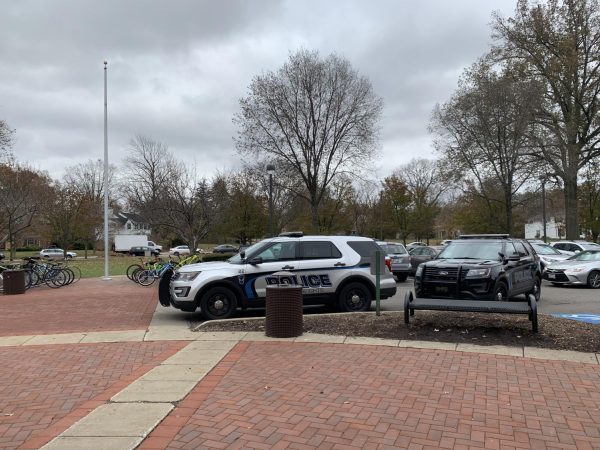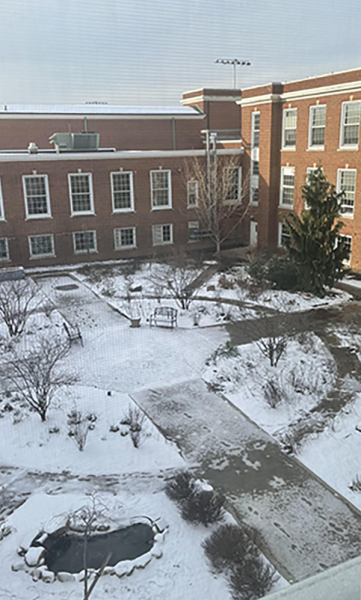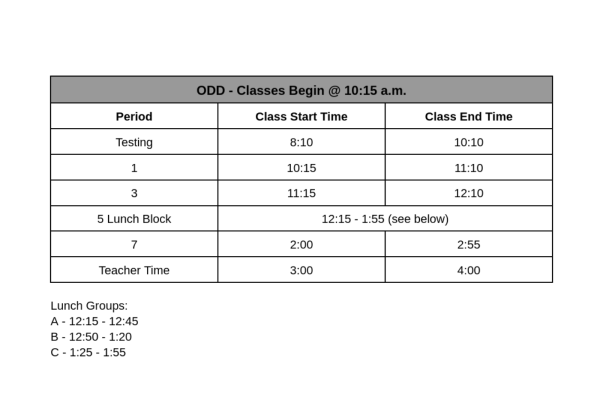Communication Gaps Revealed in Light of Violent Threats
District’s handling of last month’s social media threat leads to outrage over communication among parents, teachers and students
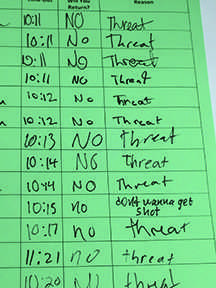
As threats of violence made by an anonymous Instagram user circulated among students, Interim Principal James Reed III made a P.A. announcement at 8:47 a.m. instructing staff to check email. The email message stated that the threat was being investigated but did not instruct teachers whether or how to communicate with students. More than 600 students left the building in the next few hours. The student who allegedly made the threats was later arrested and at 9:45 p.m., Superintendent Gregory C. Hutchings, Jr. posted news of the arrest to shaker.org.
After more than 600 students left school in the wake of a violent threat Oct. 7, the district launched a conversation that Superintendent Gregory C. Hutchings, Jr. said was overdue.
“The elephant in the room is that we haven’t had a discussion about safety in Shaker. This is the beginning, and it will continue,” Hutchings said during the Oct. 26 Safe Schools Summit in the high school large auditorium.
The district organized the summit in response to community criticism of its handling of threats directed at the high school via Instagram.
Shaker Heights police arrested a 15-year-old female student in connection with the threat.
The district invited parents, students, teachers and community members to the summit in an attempt to open a dialogue on school safety.
The summit featured a panel of nine speakers and was moderated by Leon Bibb, a former Cleveland TV news anchor and reporter.
The panel included Walter Topp, the administrator of the Cuyahoga County Office of Emergency Management, Kenneth Trump, the president of National School Safety and Security Services, and Tom Fladung, the Vice President of Hennes Communication, as well as Special Agents Lee Hopper and Vicki D. Anderson of the FBI Cleveland Division.
Joining them were Hutchings, Scott Frank, Shaker’s public health director, Fire Department Chief Patrick Sweeny, and Deputy Chief Michael Schwarber of the Shaker Heights Police Department.
The threat was posted at 12:12 a.m. Oct. 7 through Instagram direct messaging from an anonymous account. The initial threat circulated quickly among students on Instagram and Twitter. The original threat stated, “I am coming with a rifle then I will blow the b—- up.”
Police reports confirmed that Shaker Heights police were notified about a previous threat from the same account posted Oct. 6.
There is nothing more toxic than mixed messages in a crisis situation
— Scott Frank
According to Hutchings, who spoke to teachers after school Oct. 7, police determined that the Oct. 6 threat was not credible. Neither the district nor the police released information about the Oct. 6 threat to the public that day.
At the summit, Schwarber and SHPD Commander Jeffrey DeMuth explained the police’s advisory role in the threat incident.
“The school ultimately decides the credibility of a threat but, the police department does our best to evaluate,” DeMuth said.
In a threat situation, the police are the first responders, and the FBI can become involved at the request of the police and the school.
Hutchings told teachers at the Oct. 7 faculty meeting that the district had enlisted the FBI’s help.
DeMuth also told the summit audience that he could not explain everything about how police evaluate threats.
“Some of the things we can’t tell you are what formed the basis of the credibility,” he said. “That’s just law enforcement.”
“Our priority is to ensure that our staff and our students are safe,” Hutchings said at the summit.
“When we were informed of the social media threat that occurred [Oct. 6], the police were already investigating because they were contacted initially, not the school district, about the threat,” Hutchings said.
After the police informed administration that the threat was deemed not credible, the district’s Crisis Management Plan was followed, police presence at the high school was increased and the investigation continued according to Hutchings.
“We have a Crisis Communications Plan, we have a Crisis Management Plan within our district, so we’re not making impulsive or knee-jerk reactions. Once we hear that a situation is not credible, we’re not reacting the way we would if it were a credible situation,” said Hutchings. “If it was credible, immediately we would have gone into lockdown. Immediately there would have been different communication that went to our teachers, our parents as well as to the police department.”
Hutchings said that the district is revising its Crisis Management Plan.
The elephant in the room is that we haven’t had a discussion about safety in Shaker. This is the beginning and it will continue
— Dr. Gregory C. Hutchings Jr.
In an Oct. 14 interview, Principal James Reed III explained that the school’s public address system was not an effective way to signal a lockdown if one was necessary, something teachers had been reporting to the administration since the district began lockdown drills in 2005-06.
The Lockdown FAQ on the district’s website states, “The lockdown drill will be announced over the school’s public address system. Students and adults will be required to clear halls and other open spaces and go to the closest classroom or other area that provides some cover.”
However, Reed announced during an Oct. 28 safety assembly for students that the PA system had since been rewired and tested to ensure it functioned in each classroom.
Students at the assembly were given a presentation on their part in school safety. Students were reminded of procedures for fire, tornado and lockdown drills as well as advised to make sure their provided phone numbers for school communications were correct.
Reed explained the impossibility of perfect communication. “There is no communication that gets everybody. One of the things that came out of it is that there’s a large percentage of parents and families we don’t have current numbers for. The numbers that we have are disconnected, and we don’t have everyone’s cell phone numbers. So how would we communicate to everybody? That’s what the scariest piece of this is. What method? We don’t even have current numbers for all [students],” he said during an interview.
Students left the assembly underwhelmed. “Honestly, all I got was a bunch of force-fed reassurance. There wasn’t any new information, and I see this as damage control,” said sophomore Andrew Frye.
Sophomore Anna Walker said, “I think so much happened, they just wanted to calm people down.”
The first in a string of miscommunicated messages began after Reed made an announcement over the PA system at 8:47 a.m. during first period Oct. 7 instructing staff to check their emails. Reed sent an email to all building staff that stated, “We and the SHPD are aware of the threat made on Instagram. The police are investigating. School is proceeding as normal today. If you wish to excuse your child today it will be an excused absence. Parents need to call in to excuse their students before students leave.”
The email did not provide staff with instructions on what to communicate to students.
As a result, the message that was communicated to worried students varied by teacher.
Hutchings explained at the summit that there was additional miscommunication between parents and students when parents were receiving texts from children claiming there was an active shooter in the building and students were jumping out of a second floor window.
“There is nothing more toxic than mixed messages in a crisis situation,” said Frank.
“Our initial goal was not have parents decide whether or not to pick up their students,” Hutchings said.
“The school email that went out was really to keep our staff informed. If they see a student who is experiencing some anxiety, we’re not going to make them stay in school,” he continued.
“Good intentions sort of went astray here,” said Kenneth Trump, president of National School Safety and Security Services.
After Reed’s announcement and the end of first period, students filtered out of the high school’s front door by the hundreds, having texted their parents the facts as they knew them based on communication with other students. Parents’ cars surrounded the oval.
“I had dropped my daughter off at school,” parent Mary Claire Patterson said in an interview following the summit. “She was immediately approached by friends saying, ‘Are you staying, are you going?’ and then, of course, I became aware of what was going on.”
“I was on the oval for almost 45 minutes before I picked up my daughter,” said Patterson. “What I saw was not panic. What I saw was chaos and lack of control.”
“Panic is a strange thing, and it’s a human emotion that’s really hard to gauge. All of us are susceptible to it. We even had parents coming to the school that wouldn’t show us ID,” Reed said during an Oct.14 interview.
By third period that day, the halls were virtually empty.
“I was uneasy because the school was so empty, and all the administration was trying to go about it as if it were a normal day, but obviously it wasn’t,” said sophomore Jacob Connell.
“Because they didn’t issue a statement, it put everyone in a realm of uncertainty which always breathes fear,” he continued.
Some teachers were willing to comment on district’s sommunication about the threat. Spanish teacher Amy Fogerty believes the administration did the right thing while communicating.
“I think the administration gave us the information that they had at the time they had it. They didn’t make up information just to give it to us,” Fogerty said. “Personally, I didn’t have any students to communicate lasses, I only had one student.”
However, Fogerty also described what she thought the high school should have done differently. “I think I would’ve had some sort of communication with the whole student population,” she said.
Huchings said at the summit, “We need to revisit how we communicate with our students so that the messages are consistent. That will eliminate some of the confusion that happened during the incident.”
“I think [the school] communicated well with the students,” said Individuals and Societies teacher Bryan Elsaesser, “but the students were choosing to believe what they saw on Instagram. People made a mountain out of a molehill. That’s just the way it is.”
“I don’t play around with threats. I usually take them seriously. I thought the best way to be safe was to leave,” senior Christopher Hubbard said.
“We need to make sure communications also go to our students. That was the missing link . . . They are mature enough to handle that kind of situation,” Hutchings added.
Reed sent an additional email home and a robocall was made at 10:55 a.m. Oct.7 that stated, “There are a number of rumors circulating today regarding the high school, none of which are true.
The police and school security are investigating the situation, and there is no need for parents to pick up their students.”
The account owner posted a second threat around noon Oct.7 saying, “I heard everyone believes it’s a joke. Ha Ha the school doesn’t know I can do it at anytime just be ready everyone in that school will have their heads blown up or die in an explosion by the end of the week.”
Hutchings and Chief of Police D. Scott Lee posted a statement on shaker.org at 3:20 p.m after the second threat that read, “Unfortunately, we cannot control the exchange of social media messages and rumors that invite confusion and chaos. Instead, we only ask that you rely on official District and Police Department emails, postings and telephone calls for the accurate information you need and deserve.
“Again, we take any threat seriously. Therefore, the investigation into the source of today’s threat is continuing.”
A third Instagram message was sent within an hour after the second that read, “Too bad there aren’t metal detectors ha ha I might go to that school ha ha ha.”
At 9:45 p.m. Oct. 7, Hutchings’ statement about the arrest from was posted to shaker.org.
“Detectives have arrested a 15-year-old female Shaker Heights High School student in connection with social media threats against the high school,” read the post. “Chief Lee said the student admitted to making the post. The chief said there is no indication the girl had the ability or the means to carry out the threats she posted.”
The statement also congratulated the police department on the “professional manner in which they responded to this threat, and for their quick resolution of their investigation.”
In a way it was almost a service that this happened and they’re learning from their mistakes during a situation that was not actively dangerous so that if something dangerous happens, things will go even better
— Mimi Plevin-Foust
With concerns about holes in communication and protocol confusion, the school invited parents, students, teachers and community members to the Safe Schools Summit on Oct. 26 in an attempt to open a dialogue on school safety.
The summit was opened with a statement by Kenneth Trump, outlining the effects of social media on crisis situations and providing national context to the issue. Trump commended the administration in assessing the situation then reacting, rather than taking action before any understanding of events had been reached.
Audience members at the summit were invited to write questions on slips of paper for Bibb to pose to the panel. The administration said they would try to respond to additional unanswered questions on the district’s website. Answers were posted Nov.2.
“The mood was very inquisitive. People wanted their questions to be answered,” said Bibb, who is a Shaker parent and grandparent.
Approximately an hour of the two-hour summit was devoted to Trump’s presentation and panelists’ statements.
During the last half hour of the question portion of the summit, audience members began calling out to Hutchings, asking for specific information about the incident.
“I don’t know what happened. I feel like I’m waiting to hear the punch line of a joke,” an audience member said.
Another asked, “What was the plan? What was the plan that day?”
“We cannot release the district’s Crisis Management Plan to our community,” said Hutchings. “That is something that is not possible.”
Audience members continued to call out and question why the plan cannot be released, to which Hutchings responded, “If we’re standing here and trying to give you the information about how we operate and how we keep our building safe, give us at least a little bit of respect to go through our explanation.”
“This is not a town hall meeting,” added Hutchings.
“We’re talking about a topic that’s really emotional and passionate, so I just saw a lot of passion and a lot of emotion today. I wanted to at least bring to the attention of our audience that it’s important for us to be able to be rational and respectful when we’re talking about this very sensitive topic,” Hutchings said in an interview after the summit.
Trump stressed the importance of distinguishing between the execution of the district’s emergency and communications plans that day.
“They can handle the emergency plan perfectly,” Trump said, adding that failure to execute the communications plan can “become a greater crisis than the threat itself.”
Audience member Mark Levin supported Trump’s statement. “That’s a message that everyone really has to understand,” he said.
Near the end of the summit, Trump asked audience members for a show of hands to indicate the method of communication they preferred.
The majority preferred an automated text messaging service for announcements from administration. Hutchings said the administration is looking into this.
“I’m just hoping the school district will set up a system to give solid information fast,” said parent Nate Philips.
Parent Mimi Plevin-Foust saw a positive side to the situation.
“In a way it was almost a service that this happened and they’re learning from their mistakes during a situation that was not actively dangerous so that if something dangerous happens, things will go even better,” she said.
“While some mistakes were made, obviously everyone is really committed to improving the communication plan,” said parent Missy Sherwin.
The improvements in communication were exemplified when Reed informed the high school of a graffiti threat found on a bench in the dance room of the high school on Oct.30. The statement was made at 9:57 a.m. via P.A. announcement and stated that after the threat was discovered, “The student was removed from class and is now in police custody. Classes at the High School were not impacted. We have no reason to believe that anyone is in danger and the graffiti has been removed.”
The statement went on to say, “As always, we encourage students and staff to inform an administrator or security personnel if they hear or see anything suspicious or threatening. We take every threat seriously and will not tolerate disruption of our school program. All students involved in activity such as this will be warranted the highest disciplinary consequence possible by the state of Ohio. We congratulate our High School staff for their rapid and coordinated response to this incident.”
I’m just hoping the school district will set up a system to give solid information fast
— Nate Philips
Some of the district’s plans to improve communication were posted on shaker.org after the summit.
“Parents and community members should rely on the District’s web site, as well as official emails and robo-calls, for accurate information, rather than non-district web sites, media accounts, rumor and social media sources. The district is working to improve its communications by getting information to parents faster and more frequently. It is highly recommended that parents should not call or come to their child’s school during an emergency. Coming to the school could jeopardize the safety of parents and students. Excessive telephone calls to school can tie up phone lines. Both of these things may interfere with the work of police and medical personnel,” read the statement.
The day of the incident, The Shakerite posted a story about the threat at 8:49 a.m. and an updated story at 11:40 a.m.
“Impressed with @TheShakerite high school newspaper before; today they were the most reliable source of real info,” one Shaker parent tweeted at 10:09 p.m. Oct. 7.
After the event, Hutchings said, “I think that the summit was a first step in us having a discussion around safety and security in Shaker schools. I think that is beginning the discussion and dialogue which is important for us to at least start this journey.”

